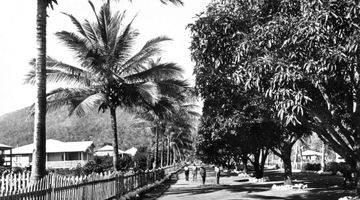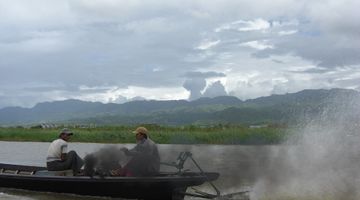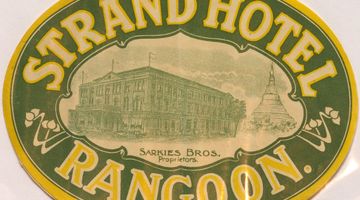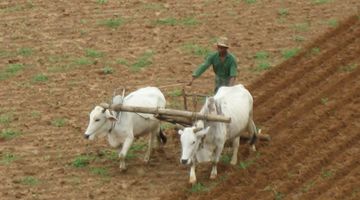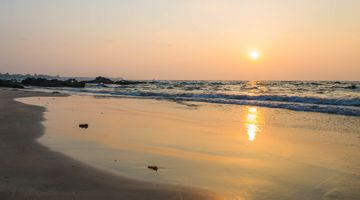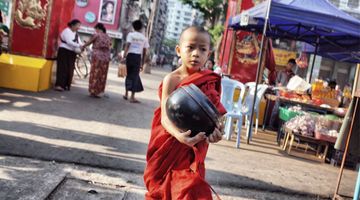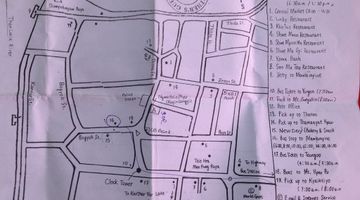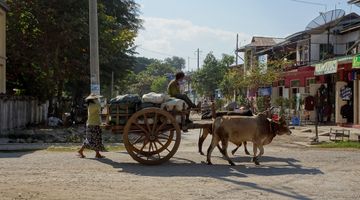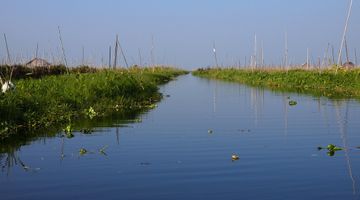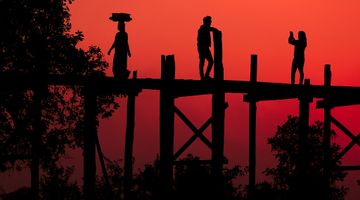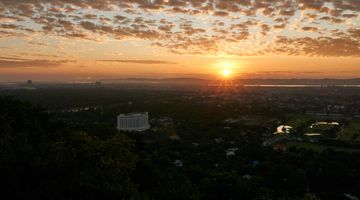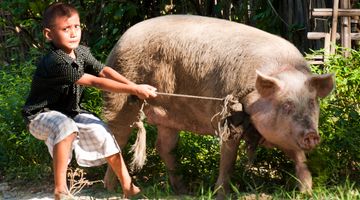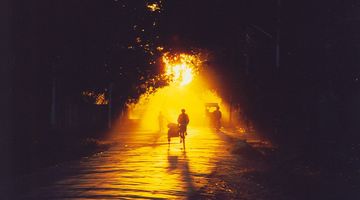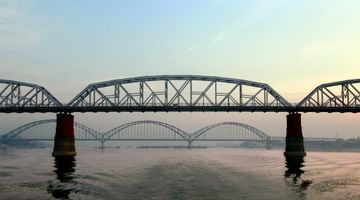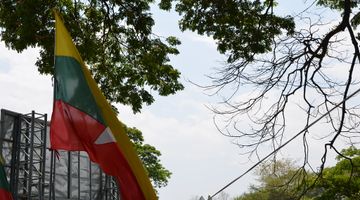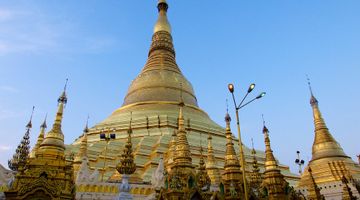Myanmar Travel Guide – Best Travelling Tips
When we decided to head to Myanmar for the first time we did not know much about the country except for that there were an ‘Ankgor-like’ place filled with ancient temples and a picturesque lake with fishermen balancing on one foot while hauling in their nets and making for a great shot. People around us continued to roll their eyes in a sort of ecstasy murmuring enthusiastically ‘Oh Burma! It is the crown of the whole South East Asia!’
So we took our backpacks and set on to find out more about that mysterious crown.
Two weeks in Myanmar turned out to be probably the most weird two weeks of all our travels and the emotions we experienced were rather contradictory. We met both the most sincere, welcoming and friendly people ever; but we also saw greedy ass-holes, pickpockets and cheats. We admired cosmic temples of Bagan and were shocked by post-apocalyptical pictures of certain areas in Yangon. We sweated through Mandalay’s scorching summer and felt refreshed and rejuvenated surrounded by lush greenery of Inle Lake.
To tell the truth, we were so happy to see Air Asia flight attendants greeting us on board a flight back to Bangkok that we almost smothered them with kisses. But as the time passed we now have to admit that our very first trip to Myanmar was simply amazing! And we are absolutely happy we went there. You should go there, too.
So why should you visit Myanmar?
It is one of a kind
But really! Even if you have already travelled the length and breadth of other countries in the region – be it Thailand, Cambodia, or Laos – Myanmar will still have more than four aces up its sleeve to leave you speechless.
From golden pagodas – you won’t find that concentration of pagodas per capita anywhere else on the earth! – to red-mouthed local grandmas chewing betel it is one of a kind.
Kids playing joyfully in the muddy Irrawaddy waters; bright balloons floating in the misty morning air of Bagan; monks in typical red robes gathering alms; small talks over a cup of tea with the locals in a simple tea-house – all these pictures form a unique mosaics, the one you will be happy to keep in your memories.
Transport-wise travelling in Myanmar becomes easier day-by-day
Times change quickly for Myanmar. Some of the main highways have been paved and now travelling by road in Myanmar is no longer an episode of a horror movie.
Trains can sometimes beat buses in terms of comfort and price though remain tremendously slow: you can get a berth in a sleeping carriage heading from Yangon to Mandalay for less than USD15, but you will need 15 hours to cover this 600km stretch.
With travel time between 8 and 10 hours and ticket prices fluctuating between USD10 and USD18 on the same route, buses do a great job, too.
The increasing number of domestic flights facilitates moving between the major tourist destination but airfare remains surprisingly high in many cases. Flying to almost any destination within the country will set you back from USD110 to USD150 though flying of course saves you a good deal of time: it takes from one hour 10 minutes to 1½ hour from Yangon to Mandalay, Heho airport for Inle Lake; or Nyaung U airport for Bagan.
It is off the beaten path
Well, yes, compared to other neighbours in the region Myanmar cannot boast millions of tourists’ arrivals – it is alone a good reason enough to visit, is it not? You can get lost in the giant maze of Bagan’s temples, meet no other foreigner trekking around Hsipaw, and have the whole Ngapali Beach totally for yourself. It is incredible, simply incredible! Tell us, why shouldn’t you go to Myanmar?
Read our Visa to Myanmar, Weather in Myanmar and Safe Travel in Maynmar pages for more information.
Where to go in Myanmar
We guess that even if you have tons of Asian experience under your belt you cannot yet get prepared to what Myanmar has for you. Even if you follow the most common and well travelled ‘Big Four’ route, you will 100% sure get back home overwhelmed with emotions and colourful memories.
The Big Four: Yangon
Even the first meeting with Yangon can kick you off your feet – excessively wide avenues and cramped lanes filled with dust and garbage; inflated hotel room rates and over-friendly locals ready to chat with you all day long over a glass of tea; under-the-table money exchange dealers with suitcases filled with wads and street rogues offering better rates and breaking money in the full daylight – all that on the background of the imposing golden spires of myriads of pagodas which fill the air with melodic ringing of the golden leaves at the finials and napping men and women who use the galleries and salas of pagodas as a shelter from the oppressive heat invading the city the greater part of the year.
The Big Four: Mandalay
Mandalay’s rolling soft and mysterious on your tongue. Surrounded by a whole bunch of historical towns of Sagaing, Mingun and Inwa, it is also the gateway to Amarapura where the slender silhouette of the iconic U Bein bridge looks surreal against the skies any time of the day.
We remember the flaring numbers of the street thermometer somewhere in Mandalay: +43 today, it impartially informed us. We spent the whole day walking and exploring, climbing up the endless stairs of Mandalay Hill and washing the experience down with tanks of water. And it was not too bad, we should say, what actually means that even during the hottest months the interior of the country still can be enjoyed.
The Big Four: Bagan
We went to Bagan – and you will do, too, – to discover it had nothing in common with Angkor besides the fact that Bagan’s pagodas and Angkor’s prangs could both be referred to as ‘temples’. With small and huge, elaborately carved and simple pagodas dotting the countryside; with old-fashioned horse carriages as one of the most popular means of local transport; with coveys of street kids trying to sell you postcards Bagan is a stunner.
The Big Four: Inle Lake
The majority of travellers inevitably end up spending at least a couple of days around the Inle Lake – and we did, too, though it actually was the destination which we included into our itinerary rather reluctantly: too touristy, too pop.
And we are definitely happy that we did go there! Though recently things have changed a lot for the Inle Lake area with cheap simple backpacker friendly guesthouses giving way to huge hotel chains, Nyaungshwe and the Inle Lake both still preserve their rustic charm. A lot of green, a lot of blue and a lot of water: is there anything more soothing than that?
Where to go if you like...
Trekking
The number one trekking route in the whole country is definitely 2- or 3-day adventure from Kalaw to Indein village on Inle Lake. Spending a night in a Buddhist monastery, eating at local people’s homes, catching glimpses of the hill tribes culture and their daily way of life were an absolute highlight of the trip to Myanmar for us and for many travellers we have spoken, too.
Though less well known than Kalaw, Hsipaw, sitting halfway between Mandalay and Lashio, has a good trekking potential, too.
Beaches
If you are a beach bum, look no further and head to Ngapali. The picture-perfect deserted strips of sand washed by turquoise waters is what this hidden gem in the Rakhine State has on offer.
If you need more white sandy beaches, Ngwe Saung is probably your thing. Chaung Tha, 10 km north along the coast, calls for golden sand lovers and is expanding quickly growing into a prime beach resort destination. Both are easily reached either from Yangon or Pathein.
Colonial architecture
You can find some great examples of the period architecture in Yangon but to get the real taste of it you should head to Mawlamyine. Sleepy yet cosmopolitan, with gilded pagodas rubbing shoulders with churches and mosques, with its bustling market and meditative sunsets over the Than Lwin River, it looks more like a fairy-tale book, not a real town.
Well-preserved colonial mansions intermingled with teak houses dotting the scenic hilly countryside – that is what Kengtung is. If you happen to cross the border from Thailand to Myanmar at Mae Sai/Tachileik border crossing, do not fly directly to Yangon from the border, take a bus to Kengtung to explore this picturesque town and its surrounds.
We were not sure whether to put Dawei under the ‘Beaches’ or ‘Colonial architecture’ section but to our tasting the colonial-era setting here is outstanding. It is easy to get to Dawei from Kanchanaburi in Thailand – make a quick hop to have a quick look!
Ancient temples and ruins
Well, after having visited Bagan you think you have seen them all? Then Monywa will be a huge surprise to you. Its stunning cave temples with intricate wall paintings and stonework never fail to impress and are sometimes referred to as the Myanmar Petra.
Though somewhat tricky to get to, Maruk U is another destination every temples buff should not miss. The former capital of the powerful Arakan Empire is slowly becoming a popular tourist destination – visit it now before the era of the package tourism comes!





